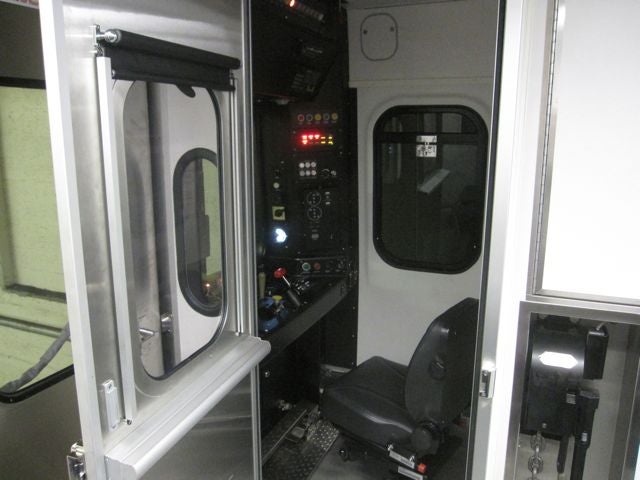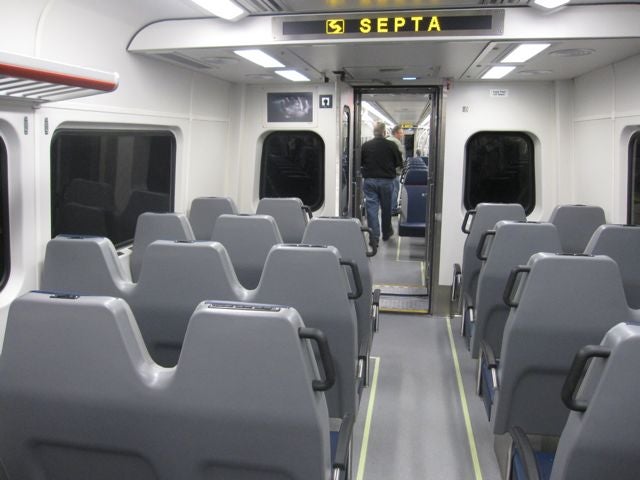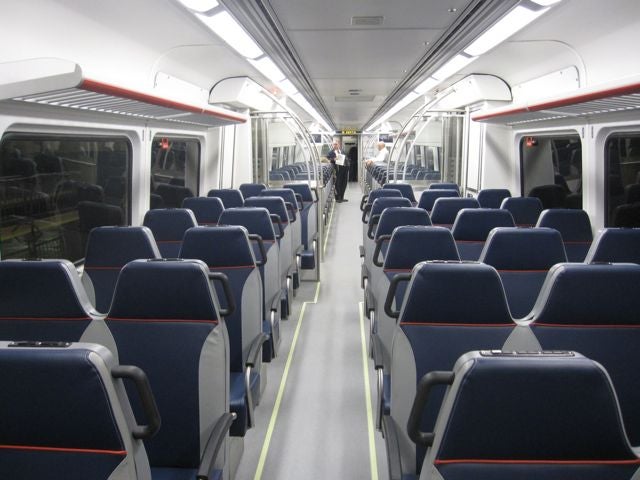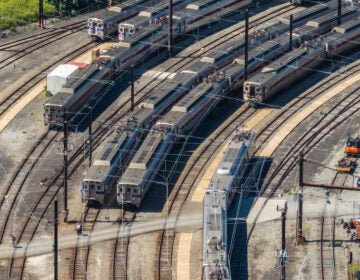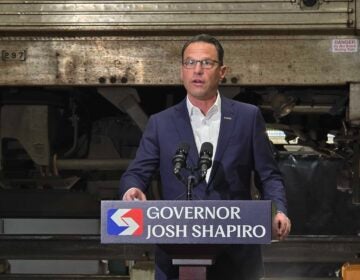Say goodbye to the special “railfan seat”
Railfans will have to find a new place to sit on the new regional rail trains.
SEPTA has decided to permanently rope off the first bench in every new Silverliner V train, that’s the seating that sits adjacent to the engineering cab.
The bench, which seats two, would have allowed riders a look at the tracks directly ahead and has been affectionately dubbed the “railfan seat.”
SEPTA spokeswoman Jerri Williams said the seats are being roped off for safety concerns.
She said the authority is concerned that riders could get injured in the event of a collision and that each day SEPTA trains make about 4,500 grade crossings, when collisions are more likely. There have been 23 collisions on regional rail since 2003.
Williams said the risk of a collision is greater on regional rail than on the Market-Frankford El, where riders can sit on a similar bench, because of the grade crossings and added that regional rail cars are liable to hit more dangerous objects.
Most collisions on the El occur when a train strikes a person. Though horrific, less physical threat is posed to riders in that event.
Williams said “our liability would be unbelievably” high in the event of a lawsuit if SEPTA had allowed riders to sit in the front two seats ― especially after receiving written warnings from the Brotherhood of Locomotive Engineers, which represents railroad engineers and conductors.
The BLE first brought these concerns to SEPTA’s attention in 2002, according to documents SEPTA provided to PlanPhilly to demonstrate that the issue had been discussed over a number of years.
In a letter to SEPTA, the union said that riders in the front of a train “could create an unnecessary and dangerous diversion” for the engineer.
(The BLE couldn’t be reached for comment.)
According to the documents, SEPTA’s Loss Prevention, Risk and Claims Management Division had similar concerns.
A 2002 memo from the division says that riders could make it harder for an engineer to vacate the cab in an emergency.
Williams said that similar configurations on the El weren’t dangerous because regional rail trains have the potential to hit larger and heavier objects.
The Silverliner V cab configuration has been a contentious issue between SEPTA, the BLE and transit advocates for years.
The BLE argued for a full cab, which would have taken up the entire front row of seats, saying the current configuration poses a safety risk.
SEPTA eventually discounted those objections and opted for the current cab configuration, arguing in a 2010 memo that things like exterior visibility were unaffected by it.
Another 2010 memo by David Casper, the Silverliner V project manager, found that “no safety or operational issues have been identified” with the current configuration.
Fran Kelly, assistant general manager for public and government affairs, said SEPTA decided to go this route instead of building a full cab because doing so would have removed several seats from every railcar. In this configuration, only the first two seats in each train will be out of service.
Assuming each of the 61 trains leaving Center City during the 4:30 p.m. to 6 p.m. afternoon rush is a Silverliner V, that would entail a loss of 122 seats. In the context of the 44,000 riders SEPTA serves on those trains, the loss is “insignificant,” Williams said.
This operating configuration represents a change from how Luther Diggs, now assistant general manager of operations, described operations of the Silverliner Vs in 2008.
In an Oct. 17 Philadelphia Inquirer article, Diggs indicated that the authority planned on only roping the cars off during engineer training, when the cab door would be opened so an instructor could communicate with the engineer.
Williams acknowledged Diggs’ statements differed from SEPTA’s current policy but said that he made them around the same time SEPTA safety experts were evaluating the risk posed riders in the front two seats.
Truth be told, regular Regional Rail riders are quite used to SEPTA conductors assuming a conversational position in the engineers’ front-of-train compartment after fares are validated.
Transit advocates were highly skeptical of SEPTA’s decision.
Matt Mitchell of the Delaware Valley Association of Rail Passengers said that “we still do not see any legitimate safety justification for this.”
He added that “at each instance” of the cars’ construction, SEPTA has signed off on the cars’ safety and that “from everything we’ve seen it indicates that there are no such concerns.”
He questioned whether SEPTA’s move was “just a smokescreen” covering up “somebody’s preference” and said that absent new information “those seats should be available to paying customers.”
(Williams denied SEPTA had caved to union pressure in making this decision.)
Aissia Richardson, chairwoman of the Citizen Advisory Committee, also raised concerns.
Though the group hasn’t taken an official stance on the decision, she said the “loss of seating is naturally of great concern to regular riders of regional transit.”
Contact the reporter at acampisi@planphilly.com
WHYY is your source for fact-based, in-depth journalism and information. As a nonprofit organization, we rely on financial support from readers like you. Please give today.



